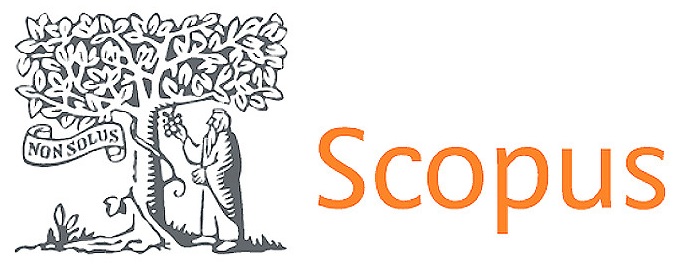Teachers’ Self-Efficacy belifs in China: A Literature Review (2015-2025)
DOI:
https://doi.org/10.56294/mw2025456Keywords:
Teacher Self-Efficacy, China, Instructional Leadership, Professional Leadership, Educational Reforms, Regional Disparities, Systematic ReviewAbstract
This study reviews literature on teachers’ self-efficacy beliefs in China from 2015 to 2025, aiming to identify key trends, influencing factors, and research gaps. Rooted in Bandura’s social cognitive theory, it examines how instructional leadership, professional development, classroom management, and student outcomes shape teachers’ self-efficacy. Using a systematic literature review, relevant studies were analyzed based on theoretical foundations, methodologies, and findings. Results indicate that educational reforms, regional disparities, and professional expectations significantly impact self-efficacy, with instructional leadership and training playing positive roles, while rural areas face persistent challenges. The discussion highlights policy and practical implications, emphasizing the need for targeted interventions and further research on digital education and cultural influences. This review contributes to understanding self-efficacy in China’s educational context and provides insights for policymakers, educators, and researchers. Its originality lies in synthesizing recent studies to offer a comprehensive perspective on evolving trends and challenges in teacher self-efficacy.
References
1. Bandura, A. Self-efficacy: The exercise of control. W.H. 1997. Freeman and Company.
2. Tschannen-Moran, M., & Hoy, A. W. Teacher efficacy: Capturing an elusive construct. Teaching and Teacher Education, 2001:17(7), 783–805. https://doi.org/10.1016/S0742-051X(01)00036-1
3. Klassen, R. M., & Tze, V. M. C. Teachers’ Self-Efficacy, Personality, and Teaching Effectiveness: A Meta-Analysis. Educational Research Review, 2014:9-76. https://doi.org/10.1016/j.edurev.2014.06.001
4. Zee, M., & Koomen, H. M. Y. (2016). Teacher self-efficacy and its effects on classroom processes, student academic adjustment, and teacher well-being: A synthesis of 40 years of research. Review of Educational Research, 86(4), 981–1015. https://doi.org/10.3102/0034654315626801
5. Skaalvik, E. M., & Skaalvik, S. Teacher Self-Efficacy and Teacher Burnout: A Study of Relations. Teaching and Teacher Education, 2010:26, 1059-1069. http://dx.doi.org/10.1016/j.tate.2009.11.001
6. Goddard, R. D., Hoy, W. K., & Woolfolk Hoy, A. (2004). Collective efficacy beliefs: Theoretical developments, empirical evidence, and future directions. Educational Researcher, 33(3), 3–13. https://doi.org/10.3102/0013189X033003003
7. Liu S, Hallinger P. Principal instructional leadership, teacher self-efficacy, and teacher professional learning in China: Testing a mediated-effects model[J]. Educational administration quarterly, 2018, 54(4): 501-528.
8. Li, L., Hallinger, P., & Ko, J. (2016). Principal leadership and school capacity effects on teacher learning in Hong Kong. International Journal of Educational Management, 30(1), 76-100. https://doi.org/10.1108/IJEM-03-2014-0035
9. Tschannen-Moran, M., & Hoy, A. W. (2007). The differential antecedents of self-efficacy beliefs of novice and experienced teachers. Teaching and Teacher Education, 23(6), 944–956. https://doi.org/10.1016/j.tate.2006.05.003
10. Gibson, S., & Dembo, M. H. Teacher efficacy: A construct validation. Journal of Educational Psychology,1984: 76(4), 569–582. https://doi.org/10.1037/0022-0663.76.4.569
11. Boote, D. N., & Beile, P. Scholars before researchers: On the centrality of the dissertation literature review in research preparation. Educational Researcher, 2005:34(6),3–15. https://doi.org/10.3102/0013189X034006003
12. Braun, V., & Clarke, V. Using thematic analysis in psychology. Qualitative Research in Psychology, 2006:3(2), 77–101. https://doi.org/10.1191/1478088706qp063oa
13. Moher, D., Liberati, A., Tetzlaff, J., Altman, D. G., & The PRISMA Group. Preferred reporting items for systematic reviews and meta-analyses: The PRISMA statement. PLOS Medicine, 2009:6(7), Article e1000097.https://doi.org/10.1371/journal.pmed.1000097
14. Pajares, F. Teachers’ beliefs and educational research: Cleaning up a messy construct. Review of Educational Research, 1992:62(3), 307–332. https://doi.org/10.3102/00346543062003307
15. Hattie, J. Visible learning: A synthesis of over 800 meta-analyses relating to achievement. Routledge.2009: https://doi.org/10.4324/9780203887332
16. Braun, V., & Clarke, V. Using thematic analysis in psychology. Qualitative Research in Psychology, 2006:3(2), 77–101. https://doi.org/10.1191/1478088706qp063oa
17. Booth, A., Sutton, A., & Papaioannou, D. Systematic approaches to a successful
literature review (2nd ed.).2016 SAGE Publications.
18. Cooper, H. Research synthesis and meta-analysis: A step-by-step approach (5th ed.). 2017:SAGE Publications.
19. Siddaway, A. P., Wood, A. M., & Hedges, L. V. How to do a systematic review: A best practice guide for conducting and reporting narrative reviews, meta-analyses, and meta-syntheses. Annual Review of Psychology,2019: 70, 747–770.
https://doi.org/10.1146/annurev-psych-010418-102803
20. Boote, D. N., & Beile, P. Scholars before researchers: On the centrality of the dissertation literature review in research preparation. Educational Researcher, 2005:34(6), 3–15. https://doi.org/10.3102/0013189X034006003
21. Braun, V., & Clarke, V. Using thematic analysis in psychology. Qualitative Research in Psychology, 2006:3(2), 77–101. https://doi.org/10.1191/1478088706qp063oa
22. Moher, D., Liberati, A., Tetzlaff, J., & Altman, D. G. Preferred reporting items for systematic reviews and meta-analyses: The PRISMA statement. PLoS Medicine,2009: 6(7), e1000097. https://doi.org/10.1371/journal.pmed.1000097.
Downloads
Published
Issue
Section
License
Copyright (c) 2025 Shihui Hua , Azlin Norhaini Mansor , Khairul Azhar Bin Jamaludin (Author)

This work is licensed under a Creative Commons Attribution 4.0 International License.
The article is distributed under the Creative Commons Attribution 4.0 License. Unless otherwise stated, associated published material is distributed under the same licence.






